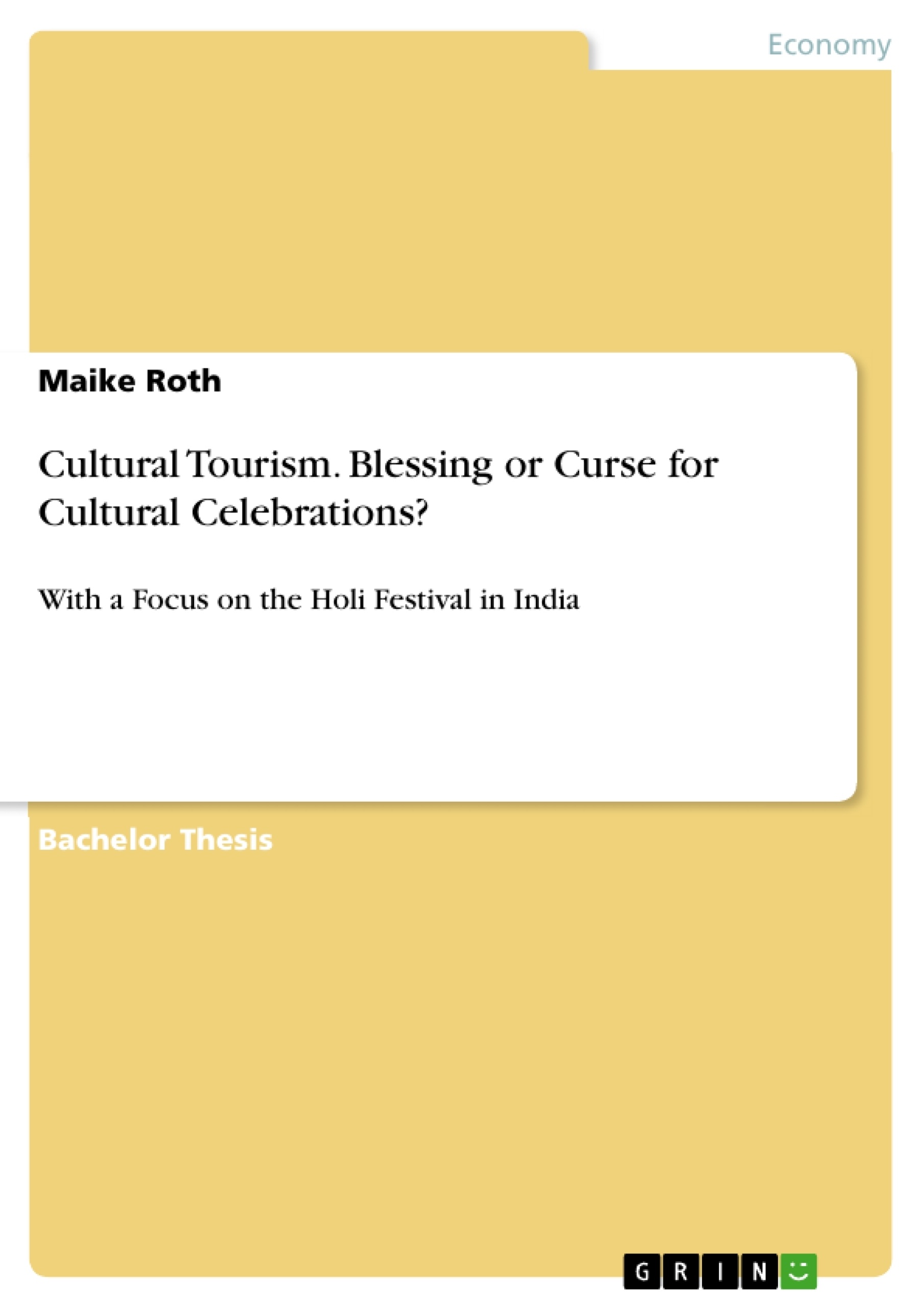In connection with globalization and the increasing willingness to interact interculturally, people are travelling more frequently, not only for business reasons or simply for holidays, but also to get a cultural insight into different parts of the world. Every culture has its own habits and observances, including everyday occurrences and of course special occasions. Cultural tourists try to look into those occasions, for example by taking part in the Holi Festival in India.
On the basis of this theory, online questionnaires as well as expert interviews were conducted to find out whether the participation is harmful or beneficial to the given cultural celebration. Both research methods were solely distributed among Indians to get their perception. The results of the two different research tools clearly showed a positive impression towards cultural tourism in general, as well as tourists who participate in the Holi Festival.
In fact, the cross-cultural interaction in form of celebrating the Festival of Colours together with foreigners predominantly is seen as a blessing for the celebration and everyone involved. Even though many limitations occurred to this study, the results are conclusive and built a basis for further research in the field.
Inhaltsverzeichnis (Table of Contents)
- Introduction
- Rationale of the Topic
- Aims and Objectives
- Motivational Background
- Structure of the Thesis
- Limitation of the Study
- Methodology
- Research Approach
- Research Design
- Data Collection Methods
- Secondary Data
- Primary Data
- Expert Interviews
- Online Questionnaire
- Sampling
- Sampling of Online Questionnaire
- Sampling of Expert Interview
- Limitation and Bias
- Relevant Terminologies
- Event
- Typology of Events
- Impact of Events
- Culture
- Rites and Rituals
- Cultural Celebrations
- Tourism
- Cultural Tourism
- Event Tourism
- Stakeholders
- Stakeholders of Tourism
- Stakeholders of Events
- India
- General facts of India
- Cultural Tourism in India
- Cultural Celebrations in India
- The Holi Festival
- Typology of the Holi Festival
- Legends of the Holi Festival
- Legend of Holika
- Legend of Dhundhi
- Legend of Radha and Krishna
- Legend of Kaamadeva
- History of the Holi Festival
- Impact of the Holi Festival
- Holi around the World
- Stakeholders of the Holi Festival
- Closing of Literature Review
- Analysis of the Indian Perception
- Demographical Data
- Analysis of the Opinion about the Holi Festival in General
- Analysis of the Opinion about Cultural Tourism in General
- Analysis of the Opinion about the Holi Festival and Tourism
Zielsetzung und Themenschwerpunkte (Objectives and Key Themes)
This thesis aims to investigate the impact of cultural tourism on the Holi Festival in India, examining whether it is a blessing or a curse for the celebration. The study employs a mixed-methods approach, combining online questionnaires and expert interviews to gather data from Indians regarding their perception of cultural tourism and its influence on the festival. The research focuses on understanding the benefits and challenges associated with cultural tourism in the context of the Holi Festival.
- Cultural tourism's impact on the Holi Festival.
- The perception of Indians towards cultural tourism.
- The benefits and challenges of cross-cultural interaction during the Holi Festival.
- The role of stakeholders in managing the impact of cultural tourism.
- The potential for sustainable cultural tourism practices.
Zusammenfassung der Kapitel (Chapter Summaries)
The introductory chapter provides a rationale for the study's focus on the Holi Festival and outlines its aims and objectives. The methodology chapter details the research approach, design, data collection methods, sampling techniques, and limitations of the study. Chapter 3 explores relevant terminologies, including definitions and typologies related to events, culture, tourism, and stakeholders.
Chapter 4 provides an overview of India, focusing on its cultural tourism offerings and traditional celebrations. Chapter 5 delves into the Holi Festival, exploring its typology, legends, history, impact, global presence, and key stakeholders.
Schlüsselwörter (Keywords)
The key terms and concepts explored in this thesis include cultural tourism, cultural celebrations, event management, the Holi Festival, India, cross-cultural interaction, stakeholder analysis, and sustainable tourism practices. The research examines the perception of Indians towards cultural tourism and its impact on the Holi Festival, considering both its benefits and challenges.
- Arbeit zitieren
- Maike Roth (Autor:in), 2011, Cultural Tourism. Blessing or Curse for Cultural Celebrations?, München, GRIN Verlag, https://www.grin.com/document/314219



